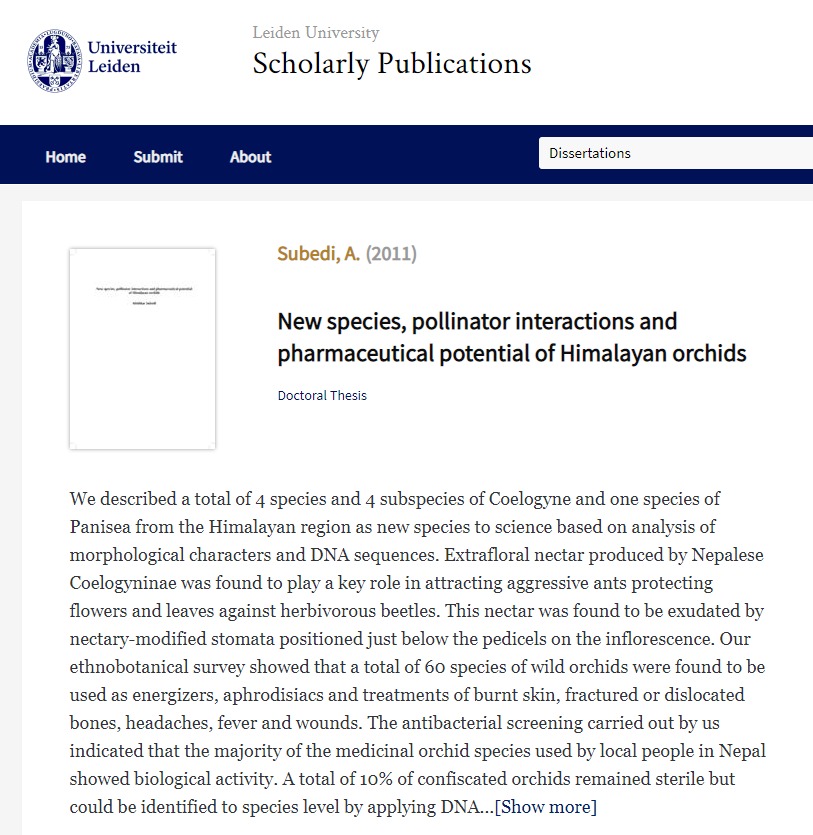
We described a total of 4 species and 4 subspecies of Coelogyne and one species of Panisea from the Himalayan region as new species to science based on analysis of morphological characters and DNA sequences. Extrafloral nectar produced by Nepalese Coelogyninae was found to play a key role in attracting aggressive ants protecting flowers and leaves against herbivorous beetles. This nectar was found to be exudated by nectary-modified stomata positioned just below the pedicels on the inflorescence. Our ethnobotanical survey showed that a total of 60 species of wild orchids were found to be used as energizers, aphrodisiacs and treatments of burnt skin, fractured or dislocated bones, headaches, fever and wounds. The antibacterial screening carried out by us indicated that the majority of the medicinal orchid species used by local people in Nepal showed biological activity. A total of 10% of confiscated orchids remained sterile but could be identified to species level by applying DNA barcoding and chemical profiling. Our market surveys in central Nepal showed that many wild orchid species are involved in illegal trade and exported to China and India for preparation of herbal products and traditional Chinese medicines. Wild orchids were found to be immensely important to sustain local livelihoods in Nepal. Due to large scale ille¬gal trade, many species are rapidly becoming endangered in the wild. Establishing sustainable orchid breeding enterprises could be a valuable alternative for the production of medicinal orchids for local communities. Critically endangered species should be placed on CITES Appendix I to prevent their extinc¬tion from the wild. DNA barcoding and chemical profiling seem promising tools for a better control of cross-border illegal trade.